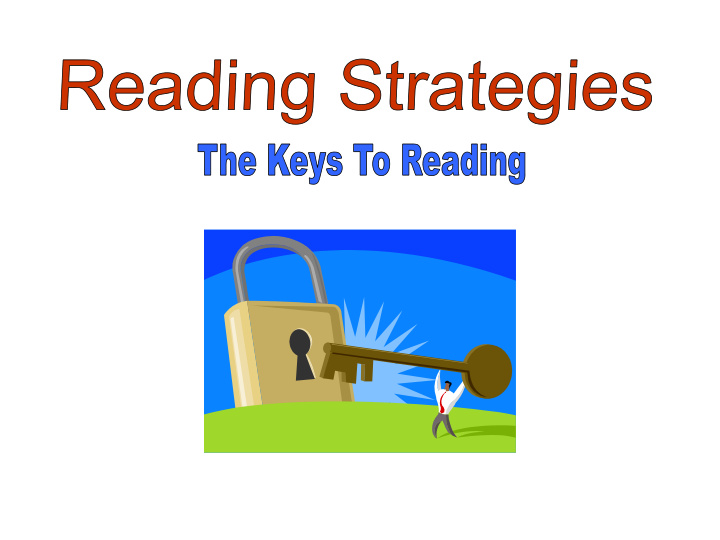



Make Your Finger Match What You Should See Your Child Doing -Using pointer finger to point under each word read -Moving finger from left to right How You Can Help -Remind your child to point to each word. -Help your child to make sure his/her finger matches what is read.
Start the Word What You Should See Your Child Doing -Making the sound of the first letter in a tricky word -Using the first sound to think of a word that makes sense How You Can Help Ask: -Did you look at the first letter and start the word? -Can you think of a word that would make sense and starts with that letter?
Look at the Picture What You Should See Your Child Doing -Looking at the pictures before reading to activate background knowledge -Referring to the pictures while reading to help in problem solving words How You Can Help -Remind your child to look at the picture when he/she is stuck. -Ask your child if what he/she read matches the picture.
cat
Look for the Chunk cat What You Should See Your Child Doing -Looking for known parts of the tricky word -Using word families or smaller words to problem solve How You Can Help Ask: -Can you find a word or chunk you know in that word? -Do you know a word that looks like that word?
Guess and Check What You Should See Your Child Doing -Using a variety of reading strategies -Monitoring reading by making sure it looks right, sounds right, and makes sense How You Can Help -Remind your child to use the reading strategies. -Encourage your child to re-read to be sure that what is read looks right, sounds right, and makes sense.
Does It Look Right? What You Should See Your Child Doing -Checking his/her reading by looking through the entire word -Deciding if the word read matches the print by looking through the word from left to right How You Can Help Ask: Does that word look right?
Does It Sound Right What You Should See Your Child Doing -Deciding if the word read sounds like language we use - Correcting mistakes if what is read doesn’t sound like everyday use of language How You Can Help Ask: Does that sound right? Would you say it that way if you were talking?
Does it Make Sense? What You Should See Your Child Doing -Using common sense to problem solve an unknown word -Making sure that what he/she reads makes sense How You Can Help -Remind your child to monitor his/her own reading by asking: Does what I just read make sense?
Re-Read What You Should See Your Child Doing -Re-reading to problem solve when he/she notices something isn’t right How You Can Help -Encourage your child to re-read and use the strategies he/she knows to problem solve - Think about what makes sense and looks right
Make Your Eyes Match the Words What You Should See Your Child Doing -When a child no longer needs to point under the words all the time, he/she can use his/her eyes to read along. This enhances reading fluency. - He/she may occasionally still use their finger to match the words. - How You Can Help -When your child begins to read without his/her finger in school, encourage him/her to do the same at home.
Tap the Word! What You Should See Your Child Doing -When your child comes to an unfamiliar word, encourage him/her to use their fingers to tap out the sounds in sequence, and then blend the sounds together How You Can Help -Remind your child to try to tap out the sounds in a word when they are stuck
little
little Chop the word What You Should See Your Child Doing - When a word has a double consonant in the middle of the word, he/she can “chop” the word into smaller pieces to make it easier to figure out How You Can Help - Remind your child to “chop” double consonant words into smaller pieces that are easier to problem solve
Try another vowel sound What You Should See Your Child Doing - When he/she tries one vowel sound in a word and it doesn’t make sense, he/she can try another (short/long) vowel sound to solve the word How You Can Help -Remind your child to quickly try another vowel sound when the word doesn’t make sense
like
Slide your finger under the word What You Should See Your Child Doing - When he/she comes to a word they don’t know, he/she should slide their finger under the word, while they say and blend the sounds together How You Can Help -Remind your child to slide his/her finger under the word, while they say and blend the sounds together
Recommend
More recommend